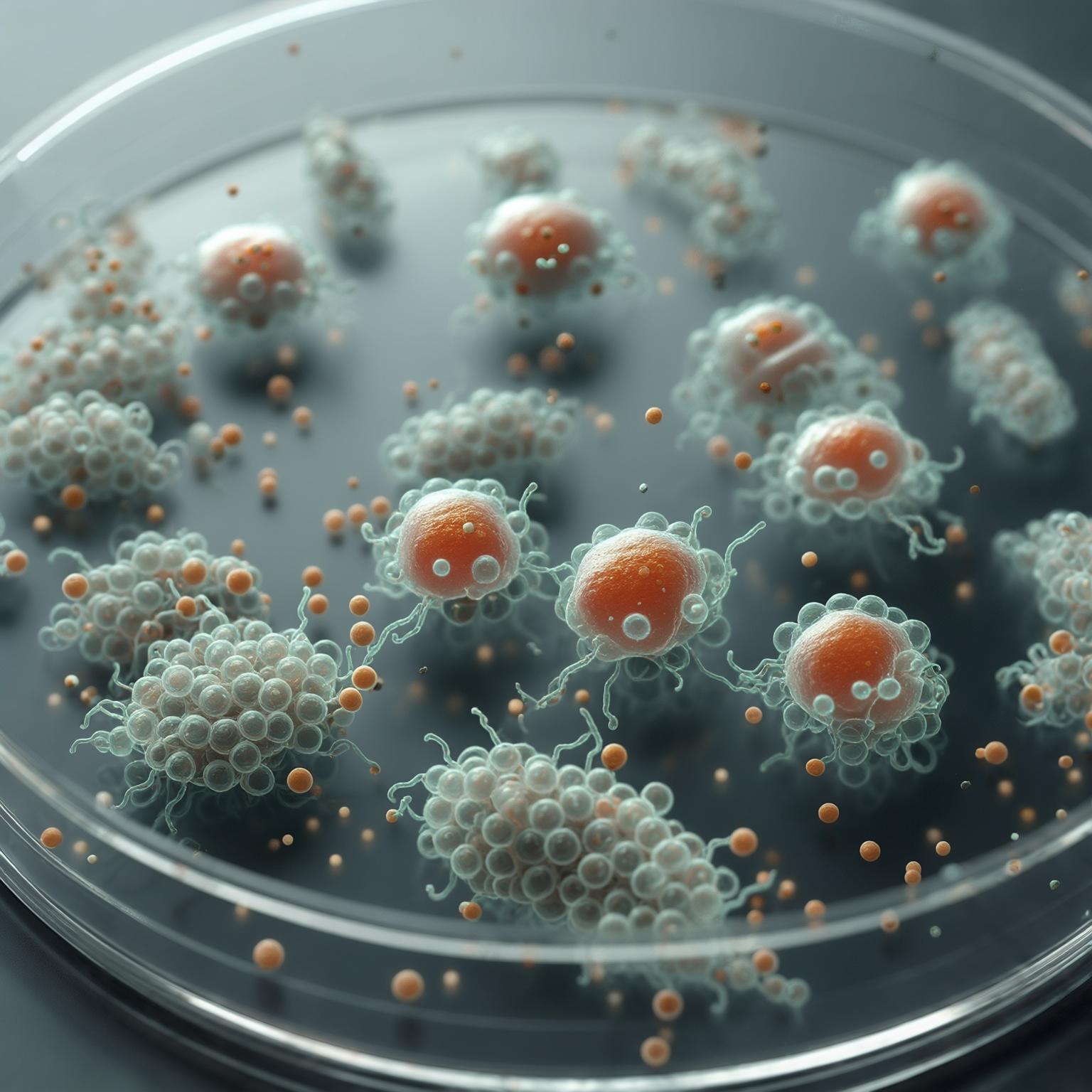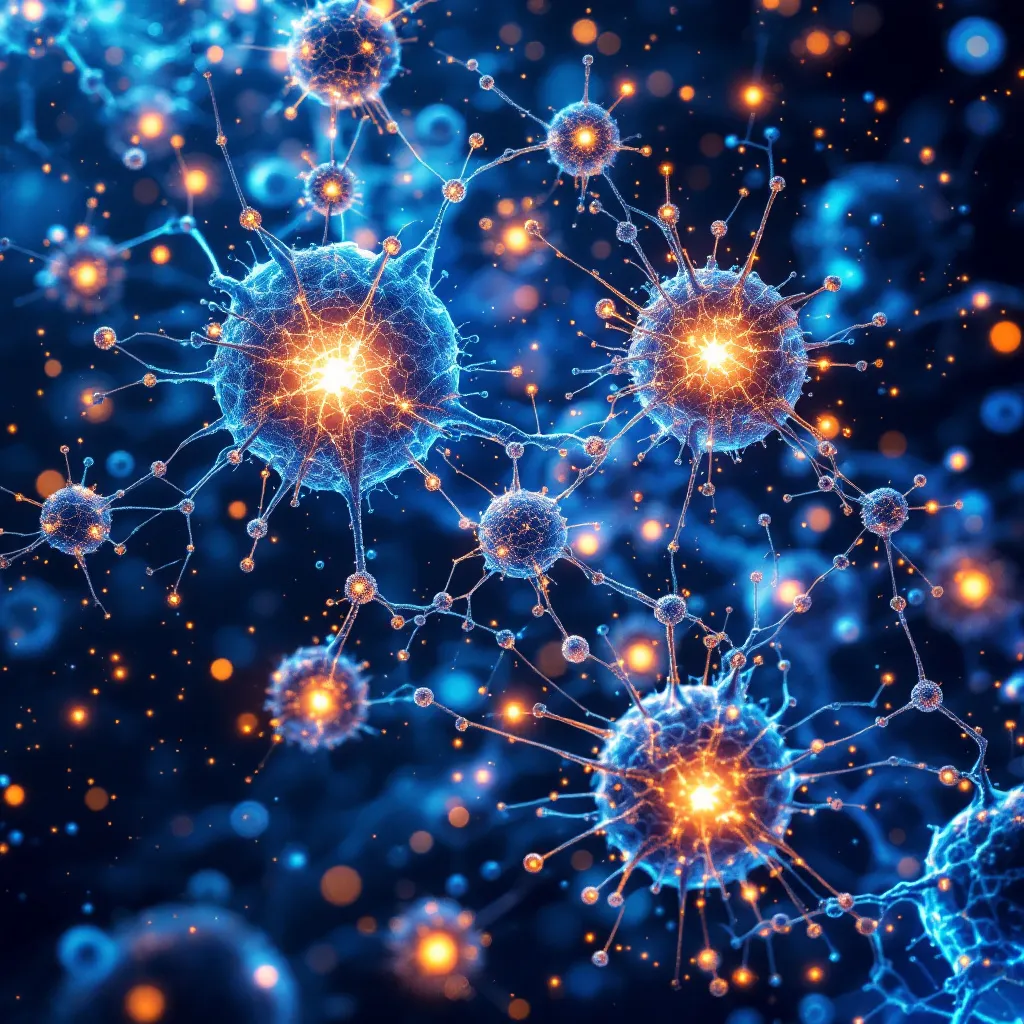Innovations in Synthetic Biology: Living Robots
Synthetic biology is revolutionizing our approach to complex problems by engineering biological systems. A fascinating frontier is the development of "living robots" or "bio-bots" – autonomous machines built from living cells.

Concept & Development
(Click or tap to learn more)
The Dawn of Bio-Bots
Living robots represent a fusion of biology and robotics, where cellular systems are engineered to perform programmed tasks. This innovative approach opens up new horizons in creating autonomous, self-healing machines that can navigate complex environments.
Innovative Fusion: Merging living cells with robotic principles is pioneering a new field.Engineering Cellular Components
(Click or tap to learn more)
Building Blocks of Life
By reprogramming stem cells (e.g., from frog embryos or human cells) and other biological materials, researchers create the fundamental building blocks. These cells are designed and assembled to form structures that can move, sense, and interact, powered by their own metabolism.
Biological Mechanism: The engineering of cellular components is central to the operation of living robots.Experimental Models & Prototypes
(Click or tap to learn more)
Early Bio-Pioneers
Laboratories, like those at Tufts University and University of Vermont (creators of Xenobots), have developed prototypes demonstrating capabilities such as targeted movement, cargo delivery, environmental sensing, and even self-repair and rudimentary collective behavior, marking significant progress.
Prototype Breakthrough: Early models showcase the potential of bio-hybrid systems.Navigating New Frontiers: Ethical and Technological Challenges
As bioelectrical therapies and synthetic biology advance, they bring forth profound ethical questions and significant technological hurdles that require careful consideration and proactive strategies.
1. Uncharted Ethical Terrain
As bioelectrical treatments and synthetic organisms evolve, critical ethical challenges emerge. These include patient consent for novel interventions, long-term safety and unforeseen side effects, equitable access to expensive new technologies, and the very definition of "life" and "machine" when dealing with bio-bots.
Ethical Prudence: Responsible innovation requires careful ethical oversight and public discourse.2. Addressing Technological Limitations
Despite promising advances, hurdles remain. These include ensuring precision in electrical stimulation to target specific cells or tissues without off-target effects, maintaining consistency in outcomes across diverse patient populations, the scalability of producing complex bio-constructs like living robots, and their longevity and control in complex environments.
Technical Hurdles: Refining technology is crucial for safe, effective, and reliable application.3. The Role of Regulatory Frameworks
Existing regulatory frameworks may not be adequate for these rapidly advancing fields. Establishing robust, adaptable guidelines is essential to balance rapid technological progress with patient safety and societal concerns. This includes clear protocols for research, clinical trials, and deployment of novel bioelectrical and synthetic biology products.
Regulatory Oversight: Policies that evolve with the technology are vital for responsible use.4. Balancing Innovation with Safety
The drive for innovation must be continuously weighed against potential safety concerns. This involves rigorous pre-clinical testing, transparent reporting of both successes and failures, and ongoing monitoring post-implementation to ensure that novel interventions do not compromise patient well-being or environmental safety while unlocking new therapeutic possibilities.
Responsible Innovation: Striking the right balance is key to sustainable advancement.Future Perspectives in Regenerative Medicine and Synthetic Biology
The convergence of bioelectricity, regenerative medicine, and synthetic biology is poised to drive radical innovations, redefining how we approach health, disease, and even environmental challenges.

Emerging Trends & Horizons
Expect to see AI-driven design of bioelectrical therapies and synthetic organisms, nano-bio-robotics for intracellular interventions, and closed-loop systems that adapt treatments in real-time based on physiological feedback.
Visionary Outlook: Future technologies promise to redefine the edge of medical treatment.Integrative Tissue Engineering
By combining bioelectrical stimulation with advanced biomaterials and genetically engineered cells, researchers are developing strategies for fully functional organ regeneration and complex tissue repair.
Strategic Integration: Fusion of interdisciplinary methods paves the way for next-gen therapeutics.Personalized & Adaptive Solutions
Future therapies will leverage real-time data from wearables and internal sensors to tailor interventions to each patient's unique biology, dynamically adjusting to enhance efficacy and safety.
Customization Potential: Adaptive treatments signal the advent of truly personalized medicine.Anticipating Next Breakthroughs
Continued international collaboration, open science initiatives, and cross-disciplinary training will be crucial for unlocking the next wave of breakthroughs, merging technological innovation with biological insights in unprecedented ways.
Looking Forward: The next era of regenerative and synthetic medicine is on the horizon.